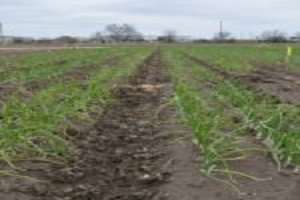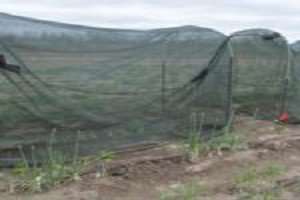Dr. Subas Malla
A unique vegetable breeding program at the Texas A&M AgriLife Research and Extension Center in Uvalde could bring improved onion, watermelon, tomato and black-eyed pea varieties to producers in South and Central Texas.

“The uniqueness of this multidisciplinary breeding program, involving breeders, physiologists, pathologists and entomologists, is the screening and development of new germplasm and ultimately improved varieties are conducted in real-life environmental conditions,” said Dr. Daniel Leskovar, center director and vegetable physiologist. “This will ensure the cultivars we breed are highly adaptable, as well as have abiotic and biotic stress tolerance and provide high yield and quality.
Leskovar said the ultimate goal is to directly benefit the Texas vegetable industry, especially producers in South, Southwest and Central Texas.
“The vegetable breeding program at Uvalde emphasizes breeding for host resistance for biotic stresses such as insects and diseases,” said Dr. Subas Malla, Texas A&M AgriLife Research vegetable breeder at the center. “The program also examines the interaction of host resistance and management practices to reduce insects and diseases in various crops.”
Malla said the predicted rise in global warming will bring increased heat and drought stress conditions to the Texas Winter Garden area, where the center is located, as well as agricultural areas further south.
“Our program will develop new cultivars to adapt to these stress conditions, “ he said. “Our breeding program will also develop mapping populations to identify diagnostic markers for quantitative trait loci for biotic and abiotic stress tolerance.”
He said the mapping to identify biotic and abiotic stress-tolerance markers will be used in the onion-breeding program via marker-assisted selection.
“Onion takes two years to complete a crossing cycle and consequently takes longer for cultivar development,” Malla explained. “By reducing the number of years to develop a cultivar, we can substantially increase the genetic gain per year in our breeding. We plan on using the doubled-haploid technique, which allows for faster generation of inbred lines for hybrid cultivar and open pollination cultivar development.”
